
No stars . No planets . Not even any atoms . At the moment of its birth, the universe was emptiness. Then, in a burst of inflation—a bit like a balloon blowing up—a very tiny area grew much, much larger. This happened when the age of the universe was just “a trillionth of a trillionth of a trillionth of a second”, says Alexei Filippenko. He’s an astronomer at the University of California, Berkeley. The dramatic period is extremely brief. During inflation, the universe’s size doubled around at least 100 times.
If a grapefruit went through this doubling process, it would grow to the size of our entire observable universe. Only inflation acted on a much smaller region. The end result was a fiery hot soup of particles and energy that was still quite small compared to the size of the universe today.
“Inflation was the ‘bang’ of the Big Bang,” Filippenko told SPACE.com. “We needed something like inflation to make the universe big.”

All the space around us today emerged during inflation and the Big Bang. But what about time? Did time as we know it also begin when space started expanding? And will the space and time that we call our universe eventually come to an end?
For humans living on Earth, time passes in a regular, predictable way. On the cosmic scale, though, time can get really weird. Some stars last for trillions of years while a gamma-ray burst is over in a few seconds. At the beginning and end of the universe, and at places like black holes, time may behave in baffling ways. Theoretical physicists are still working towards a better understanding of these aspects of time.
Before the Big Bang
What existed before the Big Bang? Cosmic inflation is a relatively new idea, proposed by Alan Guth in 1980. Before then, physicists had used Albert Einstein’s theory of general relativity to rewind the universe all the way back to something called a singularity. It is a single point with infinite density and temperature.
Questions about what existed before this point have no meaning. Just as you can’t go any farther North than the North Pole, you can’t go any farther back in time than a singularity. “If there were events earlier than this time, then they could not affect what happens at the present time,” writes Stephen Hawking in A Brief History ofTime. “One may say that time had a beginning at the Big Bang, in the sense that earlier times simply would not be defined.”
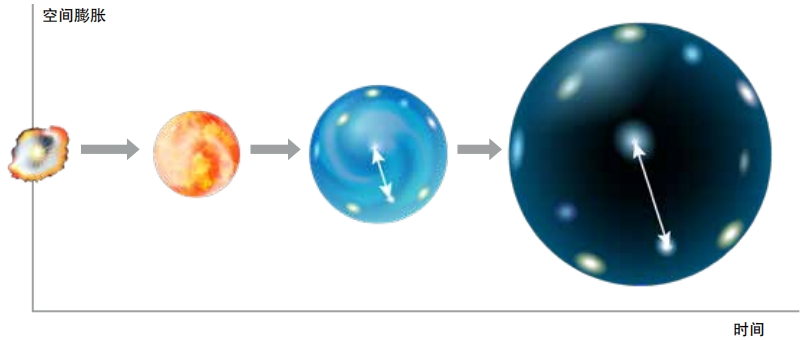
Physicists have evidence that the Big Bang happened. In 1929, astronomer Edwin Hubble discovered that distant galaxies in every direction are moving away from us. That means the universe is expanding. If you rewind this expansion, you get to an early universe in which everything was extremely close together.
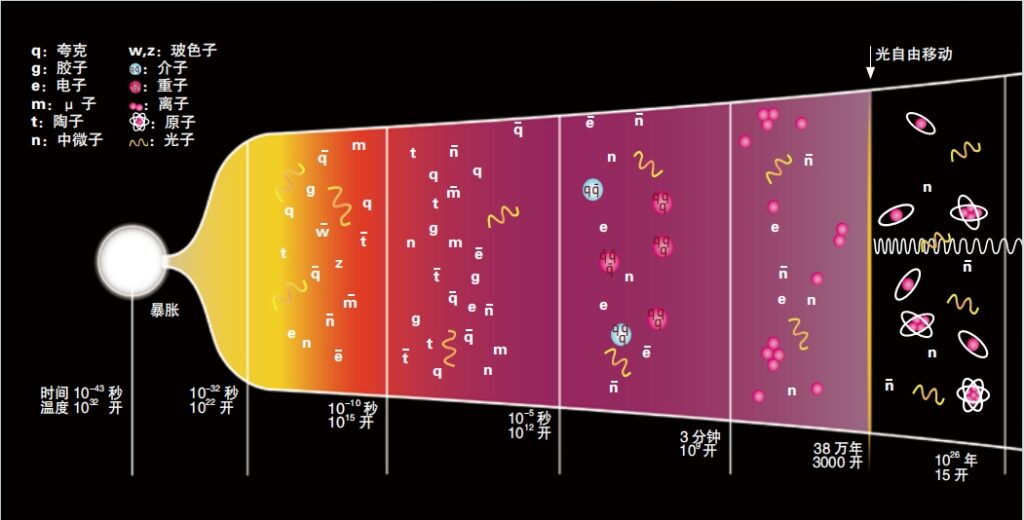
This dense universe would have been much hotter than the surface of the sun. At first, even light could not travel through this thick fog of hot stuff. About 380,000 years after the Big Bang, though, atoms as we know them began to form and light began to move freely. This light is still out there, all throughout the universe. It is very faint and cold today, just a dim afterglow of the early universe. It’s called the cosmic microwave background (CMB). In 1964, astronomers Robert Wilson and Arno Penzias detected it for the first time.
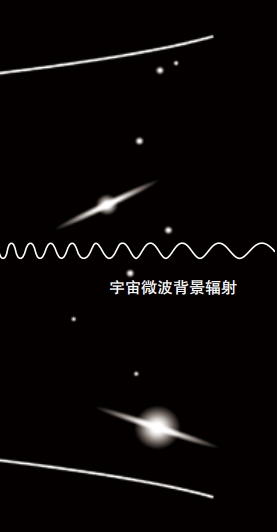
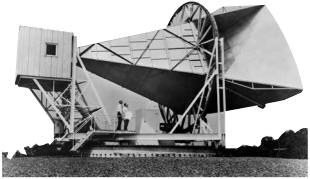
However, all this evidence only reveals that the universe was much smaller in the past. There is no physical evidence for a singularity that would mark a beginning of space and time. And trying to imagine how the universe we see around us emerged from a singularity leads to problems. Today, new theoretical frameworks, such as loop quantum cosmology, propose that there was no singularity. Adding inflation to the story of the early universe also eliminates that pesky singularity. Inflation leads back to an extremely small—but not infinitely small—region. This could have been one small part of a multiverse.
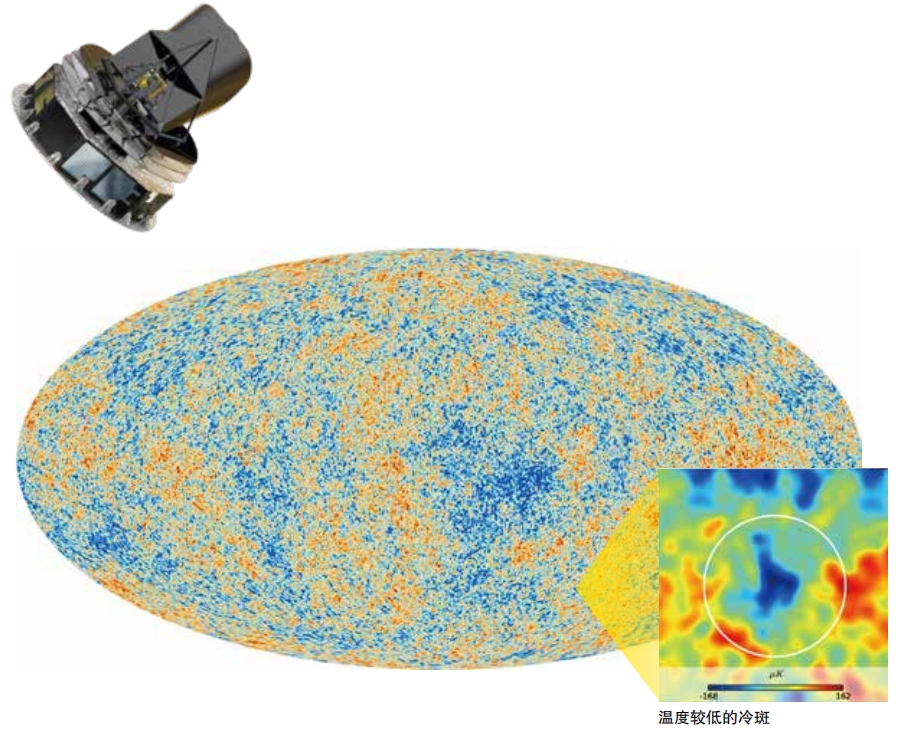
Before inflation, the small region that became our universe may have existed briefly or for an extremely long time. With our current tools, we can’t get any information from before or beyond the moment of inflation. “We don’t know anything about what came before inflation. It’s doubtful that we’ll ever know,” says Will Kinney. He’s a physicist at the University at Buffalo in New York. “Any trace of the circumstances that led to inflation are erased by inflation itself: No matter where it starts, it ends up in the same places.” The time before inflation may forever be a mystery.
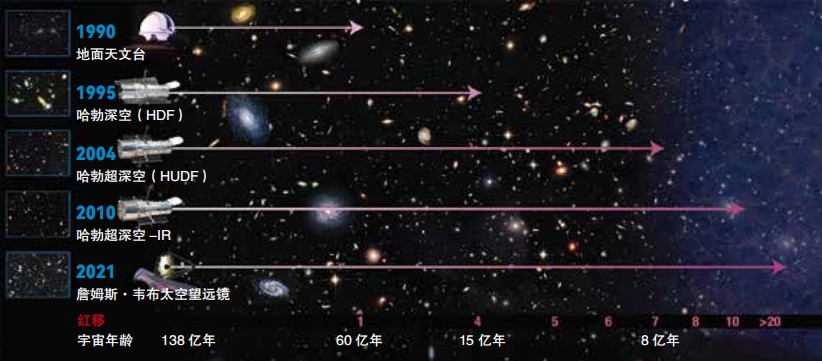
The Age of the Universe
We have a good idea of how much time has passed since inflation and the Big Bang. The universe is expanding, which means that distant objects are moving away from us. This motion changes their light, shifting it in the same way the sound of a siren gets lower as it moves away from you. Astronomers use this shift in the light to figure out how far away a star or galaxy or other object is. Extremely distant objects are also extremely old. That’s because their light takes a long time to reach us. So one way to estimate the age of the universe is to peer as far as you can into space.
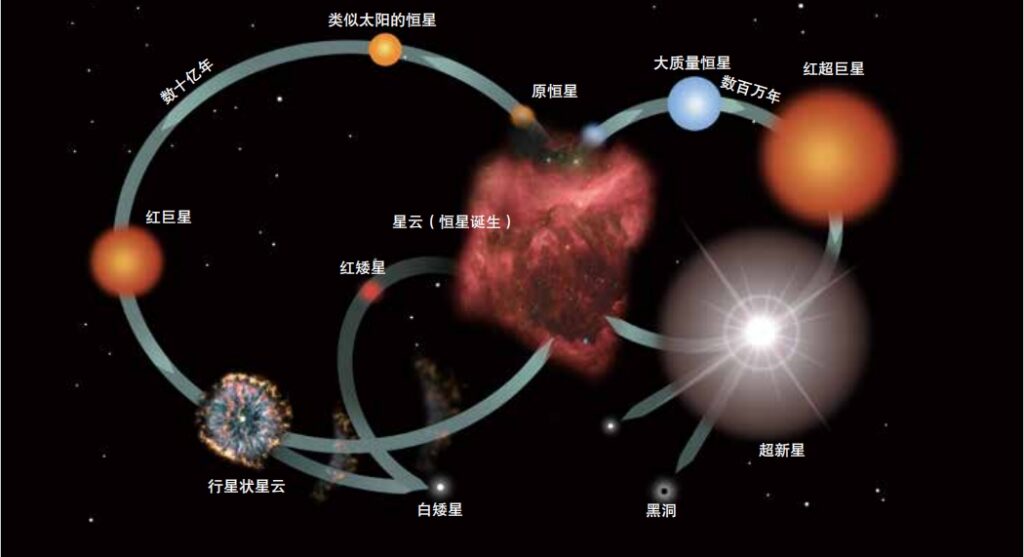
In 2022, The James Webb Space Telescope took pictures of the oldest galaxies ever found. Their light has taken a staggering 13.4 billion years to reach us. But distant stars and galaxies can’t give us a final age for the universe. That’s because, for most of the universe’s early life, stars and galaxies hadn’t yet formed.
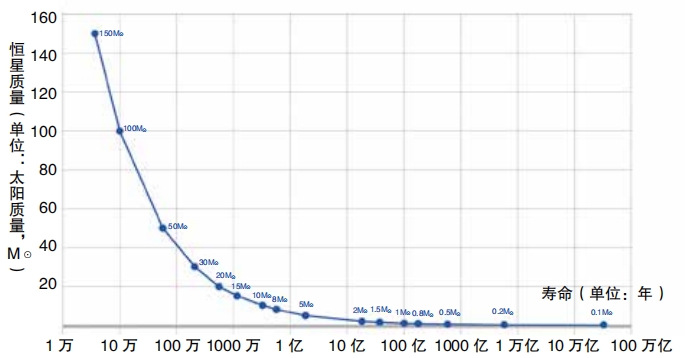
The cosmic microwave background (CMB) is the oldest energy we can detect. It’s still everywhere, all around us. Scientists can study the CMB and fit it into a model of how the universe began and grew. This model reveals an age for the universe. The more detailed the picture of the CMB, the more accurate the model will be at providing the age. In 2020, scientists used powerful telescopes to study the cosmic microwave background. They determined that the universe is around 13.8 billion years old. And the CMB formed around 380,000 years into the universe’s life story. Future measurements may update these numbers.
The Lifespans of Galaxies and Stars
Galaxies and the stars within them began forming when the universe was around 400 million years old, so that means the oldest galaxies (including our own Milky Way galaxy) are now 13.4 billion years old. Most galaxies are between this age and 10 billion years old, and new ones may still be forming. Galaxies change drastically when they run into each other. A larger one may swallow up a smaller one. Or two similarly-sized ones may join together. This will happen to our Milky Way. 4 billion years from now, it will slam into the Andromed Galaxy. Over the course of about 1 billion years, the two will merge. Galaxies “die” when they stop forming new stars. Astronomers have observed dead or dying galaxies, but these massive regions don’t have a well-understood lifespan.

Astronomers understand the lifespans of stars much more thoroughly. In general, a smaller star has a much longer life. A star’s life ends when it burns through all of its fuel, and small stars burn their fuel very slowly. The smallest stars, called red dwarfs, last so long that none have died yet. Scientists have estimated that some may last for 10 trillion years! Stars the size of the sun shine for around 10 billion years. And the largest stars last a few million years.
These time spans are all so vast that they are nearly impossible for the human mind to comprehend. For comparison, all of recorded human history has taken place in about 5,500 years.


ESO,ESA)
Some events in space happen on shorter time scales. Large stars die in a spectacular explosion called a supernova. In a typical supernova, the star’s core collapses under its own gravity. This happens within seconds to minutes. Within a few hours, the energy from this collapse reaches the surface of the star. The peak brightness of the explosion lasts for just a few years, but its remnants will last for hundreds of thousands of years.
The largest stars, about five to ten times larger than the sun, may die in an even more spectacular manner. They may implode into a black hole in an event called a hypernova. It’s 100 times brighter than a supernova. Some hypernovae form gamma-ray bursts. A gamma-ray burst is a narrow beam of energy that lasts for just a few seconds and contains as much energy as the sun will emit during its entire lifetime!
Time inside a Black Hole
On Earth, space and time seem like constant, unchanging facts of existence. Yet general relativity revealed that the presence of mass and energy can alter space and time. For example, gravity is the effect a massive body like Earth has on the – space around it. Things fall towards the ground because the Near a massive body like Earth, time moves a teeny tiny bit more slowly – but only from the point of ‘ view of an observer who is farther away from Earth. A person at the top of Mt. Qomolangma would experience faster time compared to a person at sea level, but only by one-billionth of a second every year. This is called time dilation.
Rapidly moving objects also warp time. The faster you are in space, the slower you are in time. Again, that’s from the perspective of an outside observer. Any clocks moving with you will seem to tick normally. But if you were to slow down again and compare your clock with someone who didn’t speed up, less time would have passed for you.
In A Brief History of Time, Hawking imagines a pair of twins. One went for a long trip in a spaceship at nearly the speed of light: “When he returned, he would be much younger than the one who stayed on Earth … In the theory of relativity, there is no unique absolute time, but instead, each individual has his own personal measure of time that depends on where he is and how he is moving.”
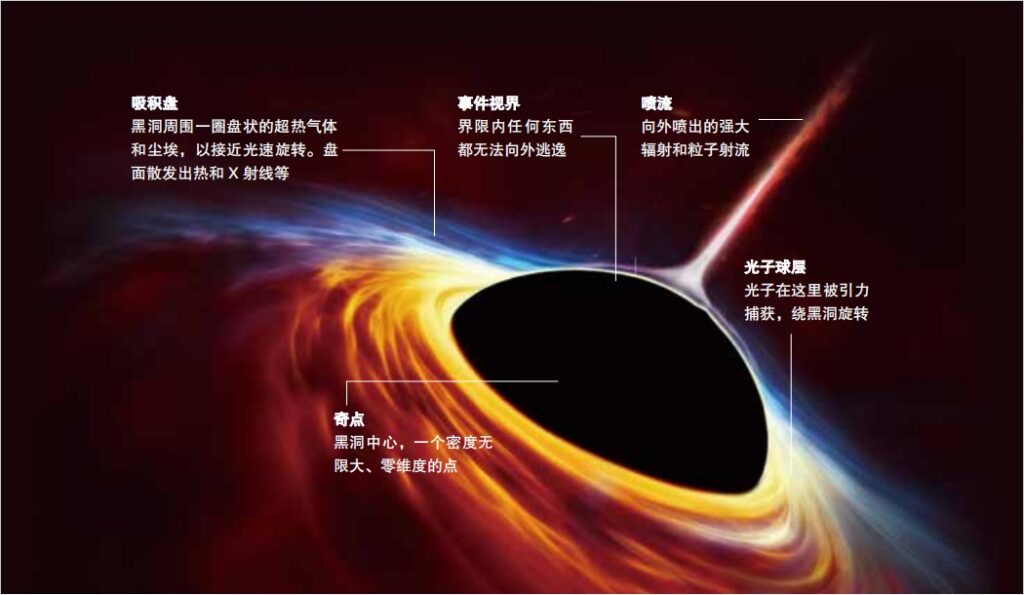
The International Space Station (ISS) has to adjust its clocks to account for time dilation, but only by a few nanoseconds at a time. This is due to the combination of two factors. First of all, the ISS moves more rapidly than people on the Earth’s surface. This slows down time on the station relative to Earth. However, Earth’s gravitational field is also weaker at the distance where the ISS orbits. This makes it experience slightly faster time, which offsets some of the time dilation caused by the orbital motion, but not all. A watch would have to stay on board the ISS for over 100 years before it would be 1 second slower than a watch a sea level.
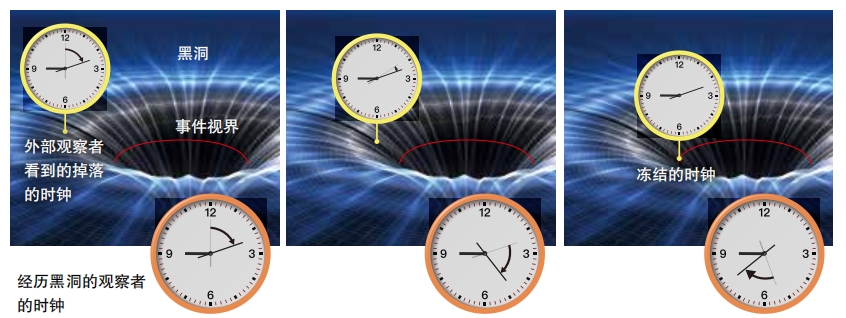
Time dilation gets especially weird near a black hole. According to general relativity, a black hole contains a singularity that slows time in an extreme manner. If an astronaut wearing a watch were unlucky enough to experience the formation of a black hole, time would seem to tick normally to them. But an outside observer would see the time on the watch appear to slow down and stop at the very edge of the black hole, called the event horizon. It’s as if time comes to an end here. In real life, no person or watch could survive falling into a black hole because the force of gravity would get so much stronger so rapidly: “This difference in the forces would stretch our astronaut out like spaghetti or tear him apart,” writes Hawking.
In the extreme gravitational environment of a black hole, the laws of physics as we know them cease to apply, and it becomes very difficult to describe the physical processes that might occur there. In a way, the astronaut would be both dead inside the black hole, as well as alive and frozen in time at its edge. Just as bizarrely, the singularity at its center is considered to have infinite density, but zero volume.
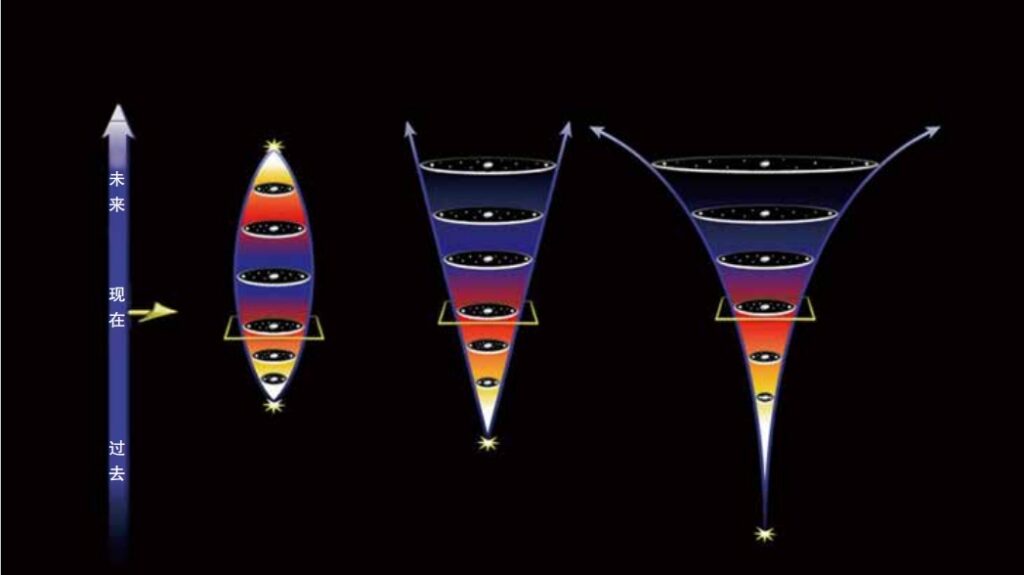
Many physicists think that something must be off with this understanding of black holes, because it just doesn’t make sense. They’ve come up with many interesting ideas but haven’t settled on an explanation. “Something has to replace the singularity, but we’re not exactly sure what,” writes Paul M. Sutter for SPACE.com. He’s an astrophysicist at Stony Brook University in New York.
The End of Time
We know the universe has been expanding since the Big Bang. We also know that right now, this expansion is speeding up. It’s actually speeding up faster than our current models of the universe’s birth and growth predict. Physicists don’t know why. They’ve named the force powering this rapid expansion “dark energy”.
If dark energy continues to stretch space at a similar rate, then the universe will end in something called a big freeze. Basically, everything dies and nothing new can form because everything is too far apart. “The universe gets more and more empty, more and more diffuse, colder over time,” says Katie Mack. She’s a theoretical cosmologist at the Perimeter Institute for Theoretical Physics in Waterloo, Canada, and the author of The End of Everything (Astrophysically Speaking). There is no end to time in this scenario, but it’s pretty bleak. “People do think of it as a depressing way to go, because you end up with everything is very cold and dark and empty and isolated, and just decaying away forever,” says Mack.
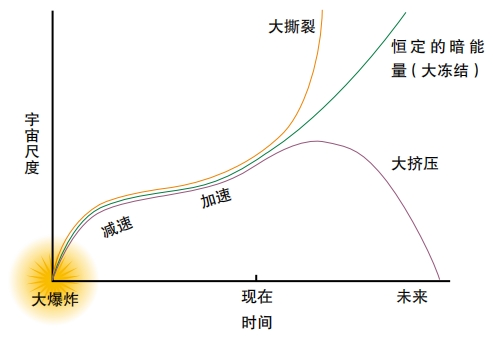
What if dark energy increases over time? This would mean that the force pulling things apart would get stronger and stronger, eventually overcoming the forces that hold things together. Galactic clusters, then galaxies, then stars, then planets, and eventually even atoms and particles would get torn apart.
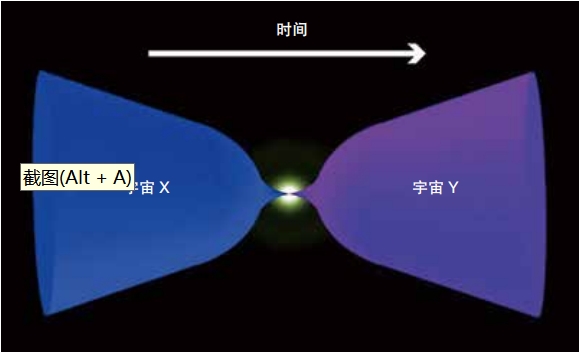
Different studies have produced different estimates for when the Big Rip could potentially occur. Some estimates suggest it may happen around 60 to 80 billion years from now. But once it got started, it would proceed faster and faster. Once stars are getting ripped from their galaxies, outer planets will be torn from stars in just a few months, then inner planets within a few weeks. Planets and molecules, atoms, and particles will meet the same fate on the scale of minutes and seconds. At the end, the universe is a singularity with infinite distance between all points. In a way, every point has become its own universe with size zero (since no point can observe or interact with any other).
Finally, if dark energy weakens with time, then the universe’s expansion could slow down and even reverse, so that everything starts collapsing under the force of gravity. This was the most popular scenario back in the 1960s. Mack explains, “Over the years, there has been an attempt to figure out, is the expansion going to win? Or is gravity going to win? And we now know that the expansion is very likely to win, because we see that the expansion is actually speeding up … we don’t see a clear way where the universe could stop and re-collapse.”
If a big crunch were to somehow happen, though, galaxies would rush toward each other and the universe would heat up. There would be so much matter collapsing in a big crunch that the universe would form a black hole. And you remember what happens to time in a black hole! It stops.
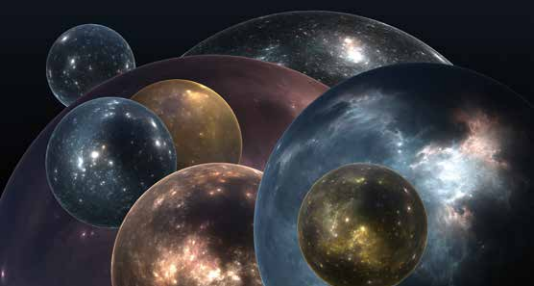
There’s one more option. Some call it the big bounce. This idea holds that before inflation set off the big bang, the universe had been contracting. Now it’s expanding. Some think it may eventually contract again, but it won’t crunch. Rather, the contraction will reach a point where it will set off another bout of inflation. If this is correct, time never begins or ends. The universe may have always been and always will be, cycling through expansion and contraction, almost like a lung breathing in and out.
